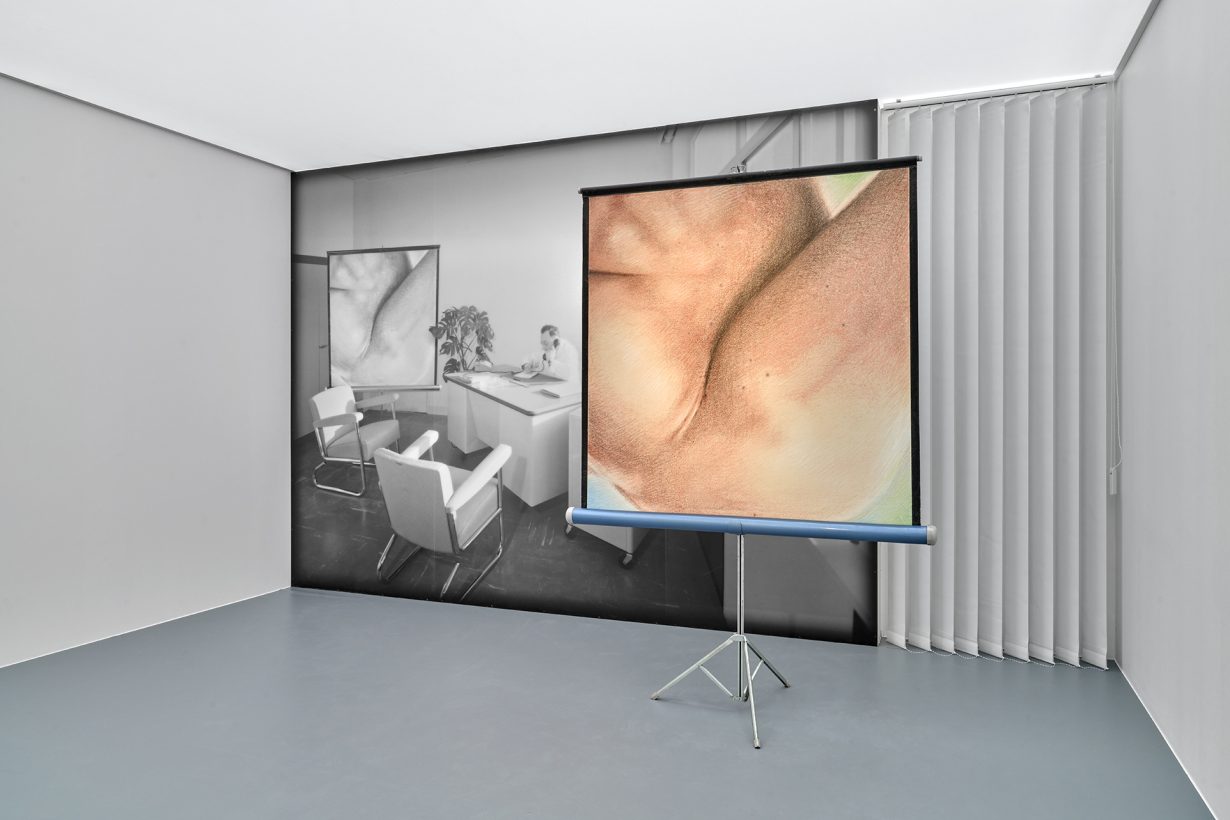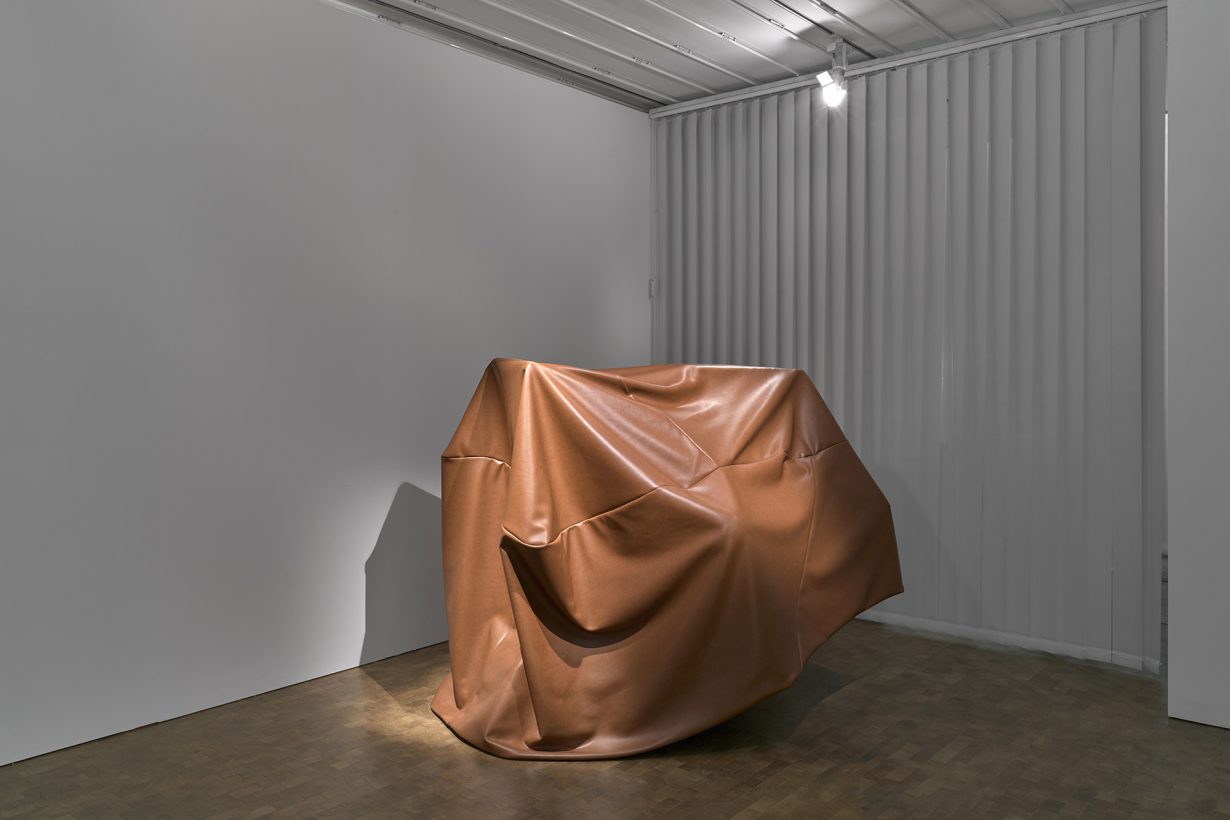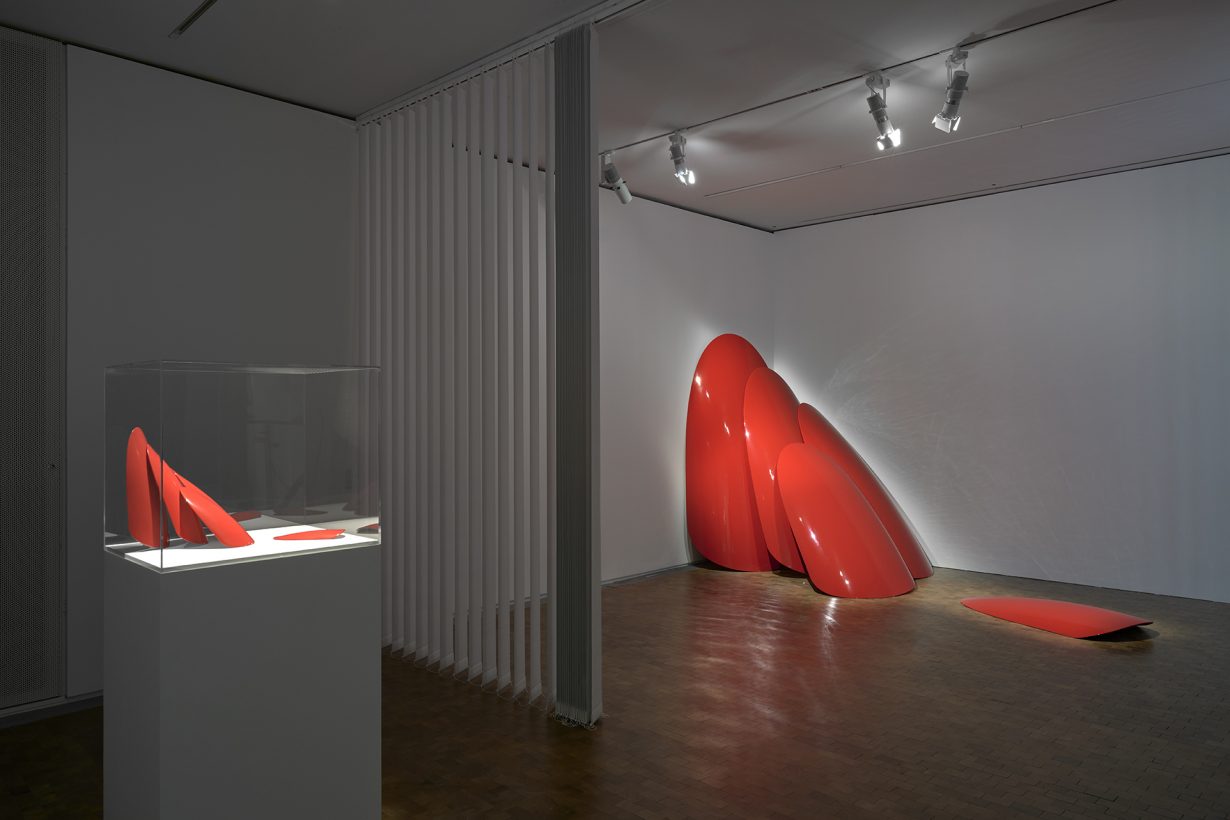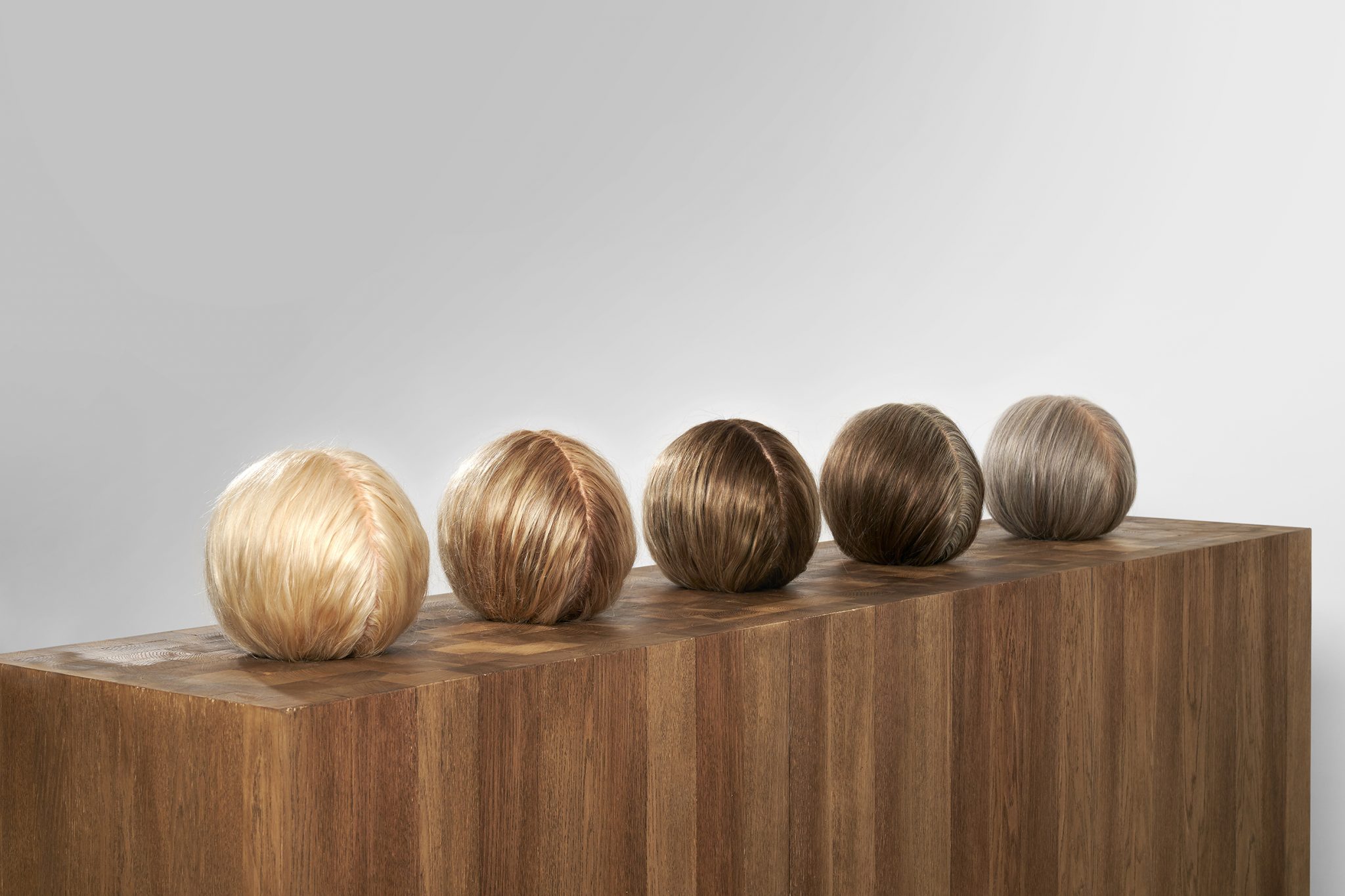Instead of sewing dummies and shoulder pads, the fashion designer has the tricks and tools – like Super-8 films and Flemish oil painting techniques – of a new trade to riff on
In 2008 the Belgian fashion designer Martin Margiela laid down his needle and scissors and picked up a paintbrush. Though, as a graduate of the Royal Academy of Fine Arts in Antwerp, it was certainly not his first time. His first solo exhibition as a visual artist – recently on view at Paris’s Lafayette Anticipations – is contiguous with what he did as a couturier, albeit liberated now from the shackles of wearability and profit margins. It’s still about process, but instead of sewing dummies and shoulder pads, he has the tricks and tools – like Super-8 films and Flemish oil painting techniques – of a new trade to riff on.

Film Dust (2017–21), a suite of three large minimalist canvases, is an elegy to the specked frames at the beginning of film reels. The human flotsam of hair and dust that would attach to celluloid is memorialised in diluted oil paint on discreetly glittery glass-beaded projection-screen fabric, reminiscent of Marcel Duchamp and Man Ray’s photograph Dust Breeding (1920). The exhibition puts to us the question Sophocles asks: what are we? And then answers: dust ghosts, a rustling of air.
More generally, the air in this exhibit hums with echoes of Belgian surrealism, and the conceptual firmament of René Magritte and Marcel Broodthaers, streaked through with the French contrails of Duchamp. Margiela begins the show with a Duchampian soft sculpture, a large lolling faux-leather dust cover. But pulled over something hulking and lumpen, Dust Cover (2021) is not the neat symmetrical sex joke of Duchamp’s Traveler’s Folding Item (1916) – a readymade leather typewriter cover placed on a stand high enough for the viewer to want to peak under the ‘skirt’.

Playfulness is not within Margiela’s ken. There is an attempt at a game in the ‘ghosts’ he has scattered throughout the exhibition. These are blank placeholders with titles and descriptions of absent works, shown only in the exhibition’s catalogue. Untitled (2014) is described as a bust without a face, executed in oil pastel on black velvet. (It is, it turns out in the catalogue, a Tom of Finland-like male torso with covered face, with a Magritte quality without the levity.) The ghosts are coy. They remind us of Margiela’s J. D. Salinger-like mythos: the faxed interviews he used to give and his eschewing of photos and public appearances. The ecru-coloured placeholders could also be a nod to Robert Rauschenberg’s White Paintings (1951), and their proposition that blankness allows for artworks to shift and reflect on their exhibiting context – and for the viewer to project onto them. Except Margiela’s blank slates, circumscribed by written descriptions, do not give themselves up so easily to the viewer. Instead, they require us to activate our inner eye to ‘see’ them: a different and more controlling experience.
One of the last garments Margiela made before he exited fashion was a jacket of blonde hairpieces, and this exhibition picks up where that left off. There is a lot of hair here, and it is deeply autobiographical: Margiela’s father and brother are hairdressers and his mother, briefly, a wig-seller. Cartography (2019) is a print on hefty PVC, wood and polyurethane foam of the back of a head. The whorl direction in which the hair grows has been diagrammed with arrows, probably an allusion to the theory that hair that grows anticlockwise indicates homosexuality. Elsewhere, there are photocollages of women’s faces encased in hair like fencing masks. There is also a triptych of men’s hair-colouring instructions to hide the grey. Each strand is magnified to the size of bucatini and built up, as the Quattrocento Italians learned from the Flemish, in layers of oil paint and glaze on oak panels. Vanitas (2019) is a row of five bewigged silicon heads, featureless and round as bowling balls. Margiela dyed hair taken from his brother’s hair salon and implanted each follicle into the scalps. With each head greyer than the last, Margiela pulls at the knot between vanitas and vanity, mortality and its concealment.

A bus shelter upholstered in fake fur looks comfy but is off limits, kept behind glass like a lion in a cage. In another room, something scrolls up and down in a fluorescent tube-lit billboard. It’s hard to see what it is up close, but walk away, look again and it’s a pastel of a closeup of a crotch or an armpit. Hair betrays the animal in us. As does our smell: the ad for the exhibition is a photo of a deodorant stick, big as a totem. And when Margiela isn’t discoursing on hair, there is meat. The exhibition feels like a butcher shop of unidentifiable cuts – a bit of torso here, a shoulder perhaps there – rendered in moulded marble or pig- coloured silicone and set on pedestals. A wallsize photo of a circa 1960s office features a tripod projection screen in the middle of its room. There is an anatomical drawing on it, but which part of the body it represents we can only guess. A lab-coated man on the telephone sits at a desk nearby. What he understands we cannot tell.
In the midst of beastly death, Margiela attempts to say, we are in life. And it’s revealed in the ways in which we try to conceal death’s advance, to reverse life’s retreat: hair dye and lipstick and nail polish – these are our weapons. These silly sundries are fashion’s lifeblood, but there is something poignant and vital about trying to keep up appearances. The exhibition ends in a small room with big glue-on fingernails in glossy red Nymphenburg porcelain. Roughly the height of modest two-by-four planks of wood, they would have been more effective at oversize Claes Oldenburg-scale, an epic vanity of vanities whose pointlessness would have been exactly the point.
Martin Margiela, Lafayette Anticipations, Paris: 20 October 2021 – 2 January 2022
